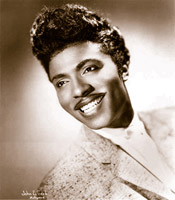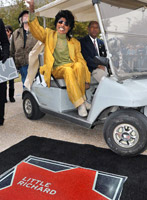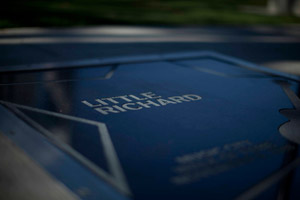Little Richard
- Hit songs include "Good Golly, Miss Molly," "Rip It Up," "Tutti Frutti," and "Long Tall Sally"
- Member of the Rock & Roll Hall of Fame
- Received a Lifetime Achievement Award from the National Academy of Recording Arts and Sciences
Little Richard blew the lid off the 50s, laying the foundation for rock and roll with his explosive music and charismatic persona. On record, he made spine-tingling rock and roll. His frantically charged piano playing and raspy, shouted vocals on such classics as "Tutti Frutti," "Long Tall Sally," and "Good Golly, Miss Molly" defined the dynamic sound of rock and roll. Onstage, he"d deliver wild, piano-pounding epistles while costumed in sequined vests, mascara, lipstick, and a pompadour that shook with every thundering beat. His road band, the Upsetters, has been credited by James Brown and others with first putting the funk in the rock and roll beat.
Little Richard first recorded in a bluesy vein in 1951, but it was his tenure at Specialty Records beginning in 1955 that made his mark as a rock and roll architect. Working at Cosimo Matassa"s now-legendary J&M Studio in New Orleans with producer Robert "Bumps" Blackwell and some of the Crescent City's finest musicians, Little Richard laid down a stunning succession of rock and roll sides over the next several years, including "Rip It Up," "Slippin' and Slidin'," "Lucille," "Jenny Jenny," and "Keep a Knockin'," in addition to the songs previously mentioned. He also appeared in rock and roll-themed movies such as Don't Knock the Rock and The Girl Can't Help It (both from 1956).
The bubble burst in late 1957 when, succumbing to the rigors of fame and personal conflicts engendered by his religious upbringing, Little Richard abruptly abandoned rock and roll to enroll in Bible college. However, he was lured back by the British Invasion in 1964, regaining his popularity as a concert performer and a living embodiment of the music's roots in the 50s. He launched successful comebacks in every decade since and will forever be a music icon - an inimitable reminder of the joyful frenzy that galvanized rock and roll into being more than 50 years ago.
Inducted to the Music City Walk of Fame on November 9, 2008.




